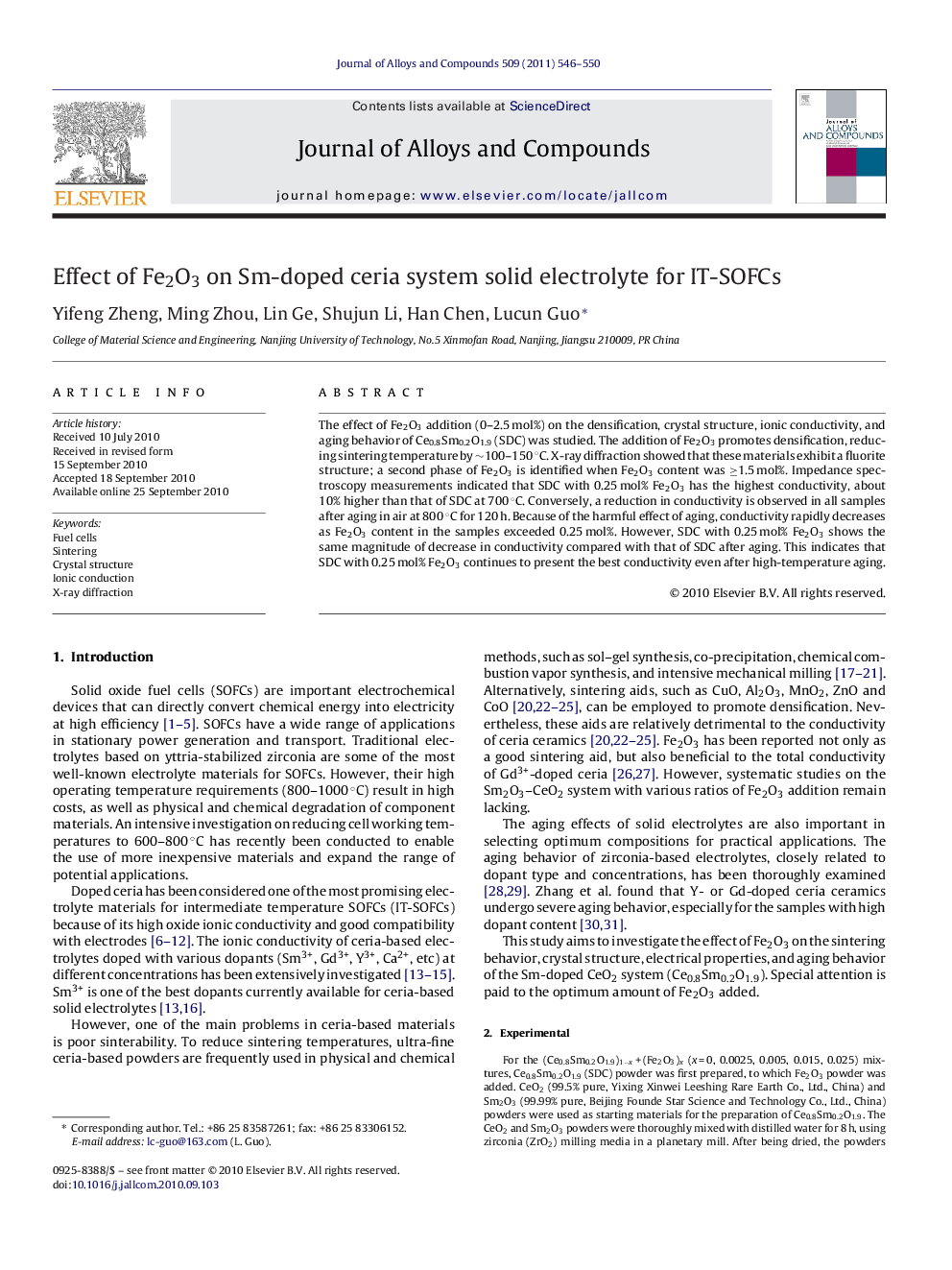| Article ID | Journal | Published Year | Pages | File Type |
|---|---|---|---|---|
| 1619210 | Journal of Alloys and Compounds | 2011 | 5 Pages |
The effect of Fe2O3 addition (0–2.5 mol%) on the densification, crystal structure, ionic conductivity, and aging behavior of Ce0.8Sm0.2O1.9 (SDC) was studied. The addition of Fe2O3 promotes densification, reducing sintering temperature by ∼100–150 °C. X-ray diffraction showed that these materials exhibit a fluorite structure; a second phase of Fe2O3 is identified when Fe2O3 content was ≥1.5 mol%. Impedance spectroscopy measurements indicated that SDC with 0.25 mol% Fe2O3 has the highest conductivity, about 10% higher than that of SDC at 700 °C. Conversely, a reduction in conductivity is observed in all samples after aging in air at 800 °C for 120 h. Because of the harmful effect of aging, conductivity rapidly decreases as Fe2O3 content in the samples exceeded 0.25 mol%. However, SDC with 0.25 mol% Fe2O3 shows the same magnitude of decrease in conductivity compared with that of SDC after aging. This indicates that SDC with 0.25 mol% Fe2O3 continues to present the best conductivity even after high-temperature aging.
Research highlights▶ The addition of Fe2O3 promotes densification, reducing sintering temperature by ∼100–150 °C. ▶ Impedance spectroscopy measurements indicated that SDC with 0.25 mol% Fe2O3 has the highest conductivity, about 10% higher than that of SDC at 700 °C. ▶ Conversely, a reduction in conductivity is observed in all samples after aging in air at 800 °C for 120 h. Because of the harmful effect of aging, conductivity rapidly decreases as Fe2O3 content in the samples exceeded 0.25 mol%. ▶ However, SDC with 0.25 mol% Fe2O3 shows the same magnitude of decrease in conductivity compared with that of SDC after aging. This indicates that SDC with 0.25 mol% Fe2O3 continues to present the best conductivity even after high-temperature aging.
